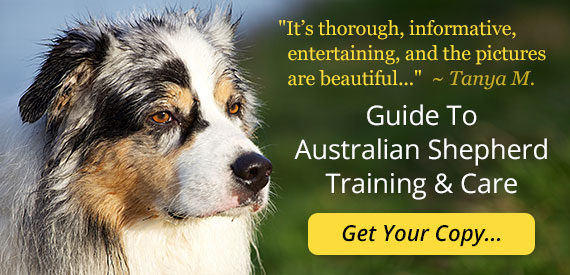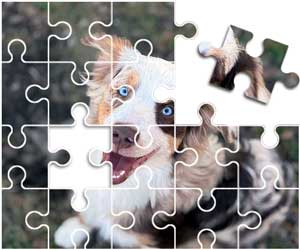
Does Your Australian Shepherd Have Tapeworms? A Guide To Dipylidium Caninum
Tapeworms may not initially display any obvious symptoms in your Australian Shepherd. Tapeworms, also called cestodes (cestoda class), are parasitic flatworms. The main species that affect dogs are Dipylidium caninum, Taenia pisiformis, Enchinococcus granulosus, and Echinococcus multilocularis. Of these, Dipylidium caninum is commonly found in dogs.
Dipylidium caninum is the Latin name for these common intestinal parasites that can infect dogs, cats, and on rare occasions, small children. Because there is a danger of infection spreading from dogs to children, it is important to get your dog treated at the first sign of infestation. The sooner you can do this and the better you are at taking preventative measures, the better your chances of avoiding problems altogether.
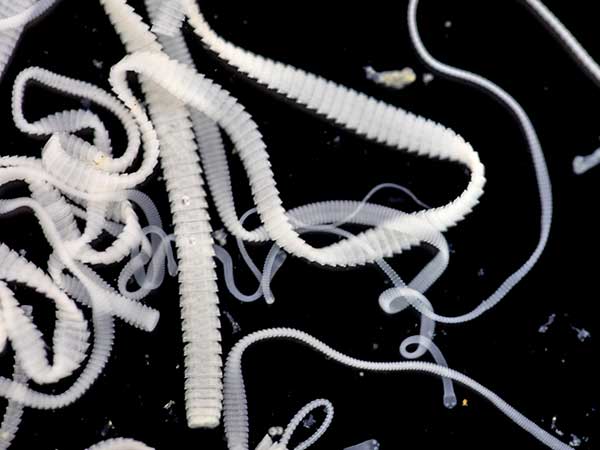
sinhyu / stock.adobe.com
If your Aussie skoots their rear across the carpet it could be a sign that they have tapeworms and are trying to relieve the itching caused as sections break off and work their way out. Each of the sections shown above are about the size of a grain of rice and you may see them near your dog's anus.
Although tape worms do not pose a serious health threat to dogs except in extreme cases, one type, Echinococus multilocularis, is especially deadly if passed on to humans.
According to the Centers for Disease Control (CDC):
"Echinococcus multilocularis is the causative agent of alveolar echinococcosis in humans. ... In accidental cases, humans as aberrant intermediate hosts may also acquire E. multilocularis infection by egg ingestion. Although a rare disease in humans, alveolar echinococcosis is of considerable public health importance because it can be lethal in up to 100% of untreated patients. Treatment is still difficult, and therapy may cost $300,000 per patient.
The parasite has an extensive geographic distribution in the Northern Hemisphere, including parts of North America (Alaska, Canada, and some of the lower contiguous states of the United States), Asia (some of the newly independent states of the former Soviet Union, China, and Japan), and some European countries."
The Life-Cycle Of Tapeworms
Tapeworms are just one of many potential parasites that can infect both puppies and adult dogs, but unlike most parasites the tapeworm can be passed along both by ingesting the feces of an infected animal and by ingesting fleas from an infected animal. This is because the eggs of the tapeworm attach themselves to the fleas and actually begin their growth cycle here.
Transmission results when tapeworm eggs are ingested and make their way into the small intestines and continue to grow. The tapeworm matures and attaches its head (scolex) to the wall of the intestines. The neck of the tapeworm begins growing sections (proglottids) each of which contain digestive and reproductive systems.
These sections contain both male and female structures and can reproduce indepenently. As more sections are created tapeworms becomes longer and longer.
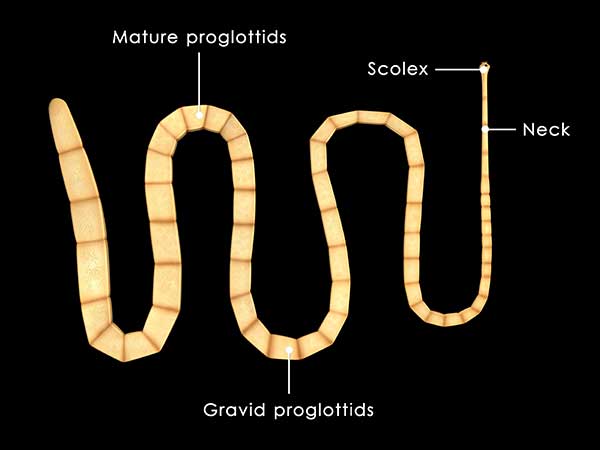
7activestudio / stock.adobe.com
Anatomy of the tapeworm, dipylidium caninum.
Eventually sections at the tail end are filled with microscopic eggs and the section breaks off and is expelled from the host. While the dipylidium caninum can reach as much as 60 cm (23.6 inches) in length and 3 mm (1/8 inch) wide in its adult form, according to the CDC, generally all you'll see are small segments that resemble grains of rice.
These segments will be visible around your dog's anus and in his poop and are usually the first indication of an infestation. Because they can be irritating when working their way out of the anus and embedding themselves in the dog's fur, you may notice an infected dog scooting his rear end against the floor or licking his rear end to get relief.
What To Do If Your Dog Is Infected With Tapeworms?
If you suspect your dog may be infected you should get him to the vet as quickly as possible for a proper diagnosis, which can usually be done by simply observing the dog's feces. Treatment involves the use of prescription dewormers, which are generally administered in a one-time shot or tablet. While it is possible to buy dewormers over the counter, because the proper dose usually relates to the weight of the dog you should still check with your vet to determine an exact dosage.
Other than treating an active infestation of dipylidium caninum it is important to take preventative measures. These include using proper flea control, talking to your vet about the use of a dewormer, and ensuring that your dog does not roam around outdoors unsupervised where he may come into contact with the feces of an infected animal. Also, be sure to clean up carefully after your dog to prevent the spread of infection.
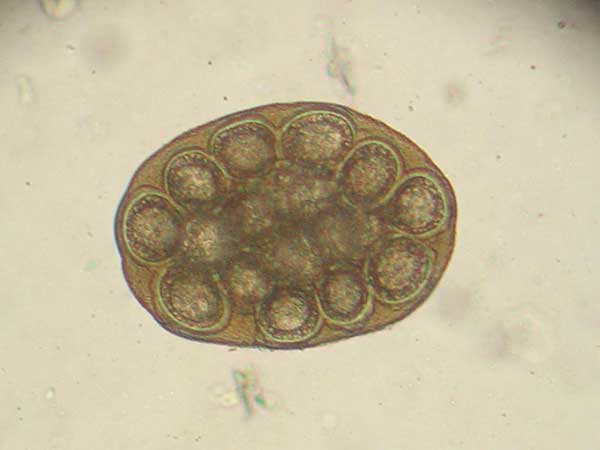
This work is licensed under the Creative Commons Attribution-ShareAlike 3.0 Unported License. Original file. Created by User:Joel Mills. This version is scaled.
An egg packet of Dipylidium caninum. Photo taken through a microscope at 400x.
It is particularly important for owners of working breeds like the Australian Shepherd to be vigilant for an infestation of tapeworms as Aussies tend to spend a lot of time outdoors or in rural settings, where they can come in contact with a variety of animals that may potentially be carriers. It can be hard to rein in your active Aussie, but an ounce of prevention now can help to avoid an infestation down the road.
While dipylidium caninum infestation is rare in humans, it is possible, particularly among toddlers and small children, who are likely to accidentally ingest infected fleas while playing with the family dog. In order to avoid the spread of tapeworm, be sure to wash your hands and your children's hands after playing with pets.
Tapeworms are not pleasant and it can be creepy to see those tiny, white, wiggling bits on your dog's rear end or in his feces, but it is important to take notice of them and seek treatment as soon as possible so that you and your furry friend can avoid this persistent and nasty pest.
For more information about Aussie health issues see the Australian Shepherd Health & Genetics Institute (ASHGI).
Have Dog Training Questions?
Check out these introductory dog training videos...
I want my dog to stop being aggressive.
I want some help training my new puppy.
I want my dog to stop barking at everything.
Get Australian Shepherd Info, Website Updates, Special Offers, and Cartoons...
FREE GIFT
You'll also receive a free copy of the ebook
My Everyday Dog Training Tools
by professional dog trainer Daniel Abdelnoor, "Doggy Dan"

